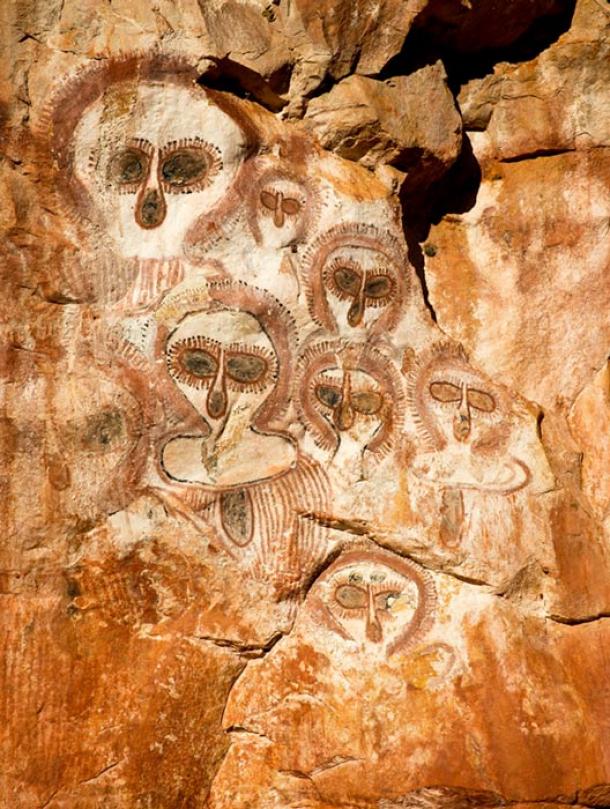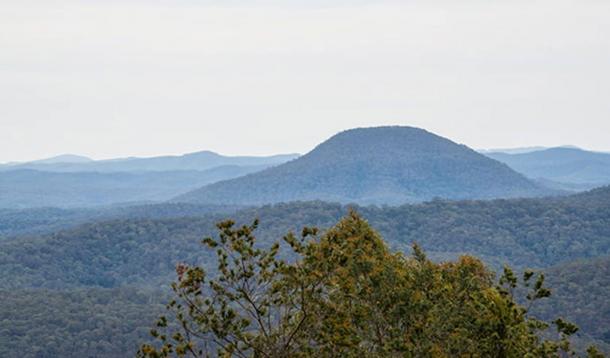The Aborigines of Australia are considered one of the oldest continuously surviving cultures in the world, encompassing hundreds of diverse cultural groups, each with their own creation stories. These Aboriginal origin stories or “Dreamtime” stories play an important role in Aboriginal art and are considered a place where every person exists forever. Here we’ll explore a small selection of Aboriginal creation myths to whet your appetite for more.
According to the Aboriginals of Australia, the “Dreamtime” preceded our own and was a time of creation when enormous mythical animals and heroes (gods) travelled across a land without form and created sacred sites. These stories were spread by oral tradition over more than 60,000 years.
What are Aboriginal Dreamtime Stories?
The stories of Australia’s Aboriginal origins can’t be deciphered without understanding Aboriginal Dreamtime stories. These stories vary from region to region, and among the different Aboriginal groups . The stories exist to explain life, creation, the cosmos and the stars.
Although difficult to understand, Aboriginal Dreamtime stories are more than simply stories of the past. They are a fusion of past, present, and future all at the same time. They blend verifiable events from the past with lessons on morality and belief systems, detailing the way in which the land, animals, and people were created by spirits.
Traditionally the legendary Aboriginal origins and Aboriginal Dreamtime stories were not written down with pen and paper, but these Dreamtime stories, and the knowledge they contain, have been passed down through generations through oral tradition, art, songs, dances, and ceremonies. Songlines, or dreaming tracks, are the journeys taken by the creator spirits across the land or the sky during the Dreamtime or Dreaming.
Today these songlines remain as long distance paths across the landscape which feature a series of landmarks related to the events that occurred and there are traditional songs, dances, and folk stories describing the lines. These songs created a cognitive map of the world, and have been described as a mnemonic device. They are also related to the famous Aboriginal walkabout rites of passage.

Rock art of Wandjina at Mount Elizabeth, Australia. (Robyn Jay / CC BY-SA 2.0 )
The Aboriginal Origin Story of Wandjina, The Creators
In the beginning there was only darkness and a bare land… There was no life on Earth—no animals, no plants, no trees, and no humans. Wandjina, the creators, were cloud and rain spirits who brought the ancestors from within the earth and over the seas, and life began. Some of the ancestors were like men and others were like animals. In fact, the ancestors were able to change shape and become either man or animal.
In some other versions, Wandjina was not one god but many gods, or spirit gods, which are depicted with big black eyes, no mouth, and a halo—certainly not representing human beings. Legends tell how Wandjina walked on Earth and created everything from rivers and mountains to plants and animals. The bodies of the Wandjina rain spirits would be shown covered in dots, which represent rainfall. Their depictions are said to represent climatic elements, such as their eyes representing thunderstorms, while the Wandjina themselves are symbols of fertility.
The land of the Wandjina encompasses about 200,000 square kilometers (77,220 sq mi) of land, water, sea, and islands in the Kimberly region of northwestern Australia. Around the area, the different Wanjina Wunggurr tribes have represented the Wandjina in ancient red and white ochre rock art. The belief is that when the Wandjina spirits had created a place they would die, leaving behind paintings in their image on the walls of caves and entering nearby waterholes. Aboriginal peoples refresh these sacred paintings periodically to ensure a continuation or transference of this traditional practice – making it the oldest continuous sacred painting movement on the planet.

Baiame Cave in New South Wales in Australia, depicting Biame the Sky Father. (Sardaka / CC BY-SA 4.0 )
The Australian Creation Myth of Baiame
Biame was the “Sky Father” or creator god in the origin mythology for several aboriginal groups in southeastern Australia. In these creation stories, Baiame arrived from the skies with his emu-wife Birrahgnooloo, the goddess of fertility, and they had a son named Darramulum, the shapeshifter. Baiame gave the first rules to humans, forbidding them to eat the animals. Τhe gods then spent time with the humans, teaching them and helping them evolve.
Later, mankind began to kill and eat animals. They were caught and punished by the god. In the ancient Aboriginal tribes, the name of the creator Baiame is forbidden to be spoken publicly. Women are prohibited from seeing depictions of Baiame, or to visit sacred sites – which in many cases are also male initiation sites known as boras. Some experts have suggested that Christianity altered the original Aboriginal myths and included elements from The Bible .
Near Lake Macquarie or Awaba, a large coastal salt water lake in New South Wales, the Aboriginal peoples believe that Baiame created the lakes, rivers, mountains, and caves before returning to the spirit world via Mount Yengo, which he is believed to have flattened on his way out. Baiame Cave in Milbrodale is a natural open cave in New South Wales which acts as a natural gallery with an evocative figure representing Baiame, the creator.

Mount Yengo is said to have been flattened as Baiame returned to the spirit world. ( NSW National Parks and Wildlife Service )
What is the Significance of the Rainbow Serpent in Aboriginal Origin Myths?
There are many references to snake people and lizard people in Aboriginal Dreamtime stories, a variation on the Wandjina creator belief. Known by many names, the Rainbow Serpent creator god appears in many Aboriginal creation stories. This is a term first coined by British anthropologist Alfred Radcliffe-Brown in 1926. Borlung, Goorialla, Dhakkan, and Kajura are just some of the other names for this reptilian spirit god.
Descended from the sky, the Rainbow Serpent appears in male, female, and hermaphroditic forms, and is both a creator of life associated with water, but also a destructive being if it made angry. The specifics of the Rainbow Serpent story vary according to location and particular features in the land or climate.
The Rainbow Serpent often lives in deep waterholes below waterfalls. The actions of the serpent create the animals and the features on the land. In one version Goorialla ate a great red kangaroo which was too tough to digest. He spewed it up and left it in the desert, forming the great red Uluru, a large red sandstone rock formation in Australia’s Northern Territory.

Uluru is a large sandstone rock formation, also known as Ayers Rock, which has many Aboriginal origin myths associated with it. (Dimageau / CC BY-SA 4.0 )
Many Aboriginal origin myths follow patterns similar to creation stories from around the world: powerful gods arriving from the sky to create humans, who then fight amongst themselves and are punished by the gods for disobedience. If we take into account that Australia is a completely isolated continent, it is curious that these common patterns would also appear in their myths.
Previously believed to be based in fiction rather than fact, over time experts are coming to understand that many of the stories are related to real events and happenings. For example, Dreamtime stories of giant spirit animals are now believed to be based on the coexistence of the original inhabitants of Australia with ancient megafauna thousands of years ago.
Top image: Aboriginal origin stories abound and vary across Australia. Dreamtime stories of the Rainbow Serpent are popular. Source: rashmisingh / Adobe Stock
Updated on February 19, 2021.
References
Brendt, R. 1994. Speaking Land: Myth and Story on Aboriginal Australia: Myth and Story in Aboriginal Australia. Inner Traditions Bear and Company
Reed, A. W. 2003. Aboriginal Myths, Legends and Fables. New Holland Publishers
Related posts:
Views: 2
 RSS Feed
RSS Feed















 February 20th, 2021
February 20th, 2021  Awake Goy
Awake Goy  Posted in
Posted in  Tags:
Tags: 
















